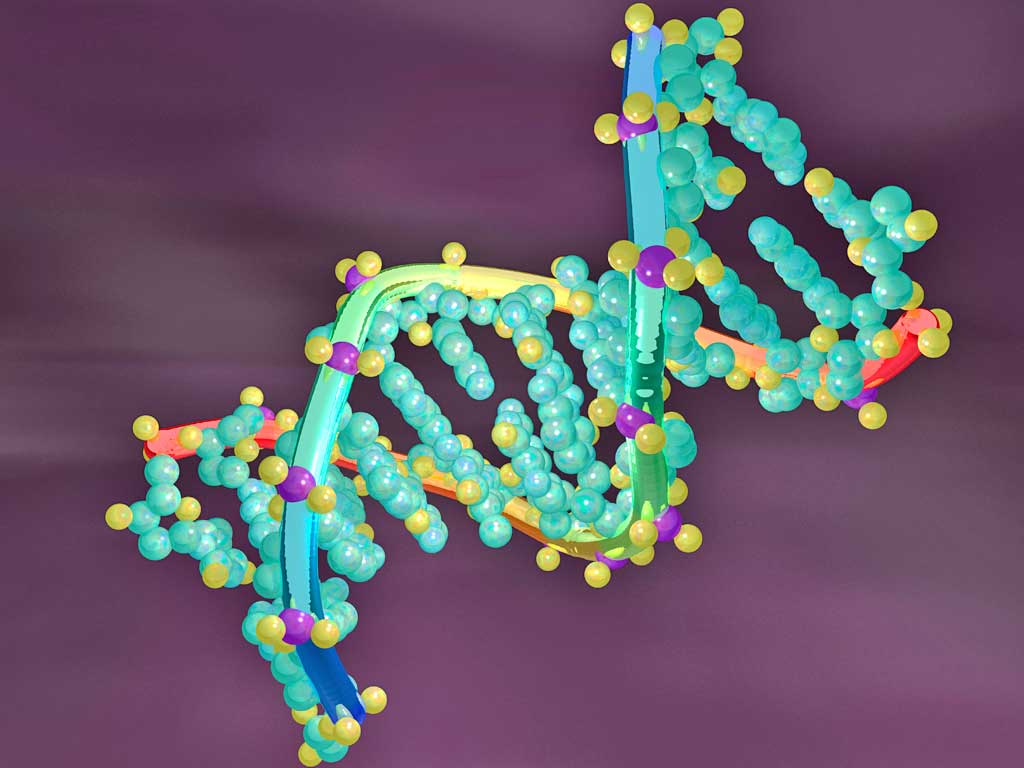There is enough data stored in DNA molecules of every life-form alive to occupy capacity of a billion trillion supercomputers, say scientists
'DNA is the fundamental molecule of life and by extent all biological processes that take place in the world are encoded in this molecule'

Scientists have shown that the Earth is not so much the planet of the apes as the planet of the DNA molecule – calculating that there is enough of it in the world to fill a billion shipping containers.
The researchers totted up the number of organisms in the world, from the tiniest virus to the biggest whale, multiplied this by the total number of their cells containing at least once DNA molecule and converted this figure into an estimated weight – about 50bn tonnes of genetic material.
This staggering quantity of DNA, however, almost pales into insignificance compared to the amount of genetic information it contains in the form of the combined genetic codes of every living animal, plant, bacterium, fungus and virus.
The scientists estimated that there is enough data stored in the DNA molecules of every life-form alive today to occupy the processing capacity of a billion trillion of the most powerful supercomputers.
Furthermore, it would require a supercomputer working at a processing rate of a trillion trillion operations every second to match the speed at which this DNA code is being continuously decoded into the living proteins of cells, the scientists said.
“We wanted to take an information approach to the biosphere,” said Hanna Landenmark of the University of Edinburgh and lead author of the study published in the on-line journal PlosBiology.
“The reason why this is important is that DNA is the fundamental molecule of life and by extent all biological processes that take place in the world are encoded in this molecule,” Ms Landenmark said.
By breaking life down into the number of molecules that store the genetic code of each organism, the scientists hope to shed fresh light on how the biosphere – the living skin of the planet – functions and what needs to be done to protect it, she said.
“We know that there are a lot of things that change in the natural environment, such as habitat loss. This obviously has an effect on the species living there. This approach offers a complementary way to quantify the changes,” Ms Landenmark said.
The researchers estimated that the combined DNA of all the living plants exceeds that of any other major group of life. This lead is closely followed by the combined DNA of the prokaryotic microbes, the single-celled organisms such as bacteria.
Other free-living mircrobes come in third from top, followed by the DNA of animals and viruses, which are almost equal to one another in overall abundance.
To simplify matters the researchers left out other copies of DNA found the cellular structures such as the power-producing mitochondria found in all life-forms, and the photosynthetic chloroplasts of plants and algae.
They also left out the DNA locked away in leaf litter, which they estimated to be almost on a par with the quantity of DNA contained in living plants, on the grounds that it was effectively “garbage data” that had been lost for good.
“This approach may help us to understand the changing complexity of the biosphere over time and to predict in new ways, both anthropogenic and natural, future changes in the biosphere,” the researchers said.
Professor Charles Cockell, who led the work at Edinburgh, said: “This offers a way to look at the total information content of the biosphere and how it’s changed over time, rather than just focussing on biodiversity assessments on the numbers and types of species.”
Subscribe to Independent Premium to bookmark this article
Want to bookmark your favourite articles and stories to read or reference later? Start your Independent Premium subscription today.

Join our commenting forum
Join thought-provoking conversations, follow other Independent readers and see their replies